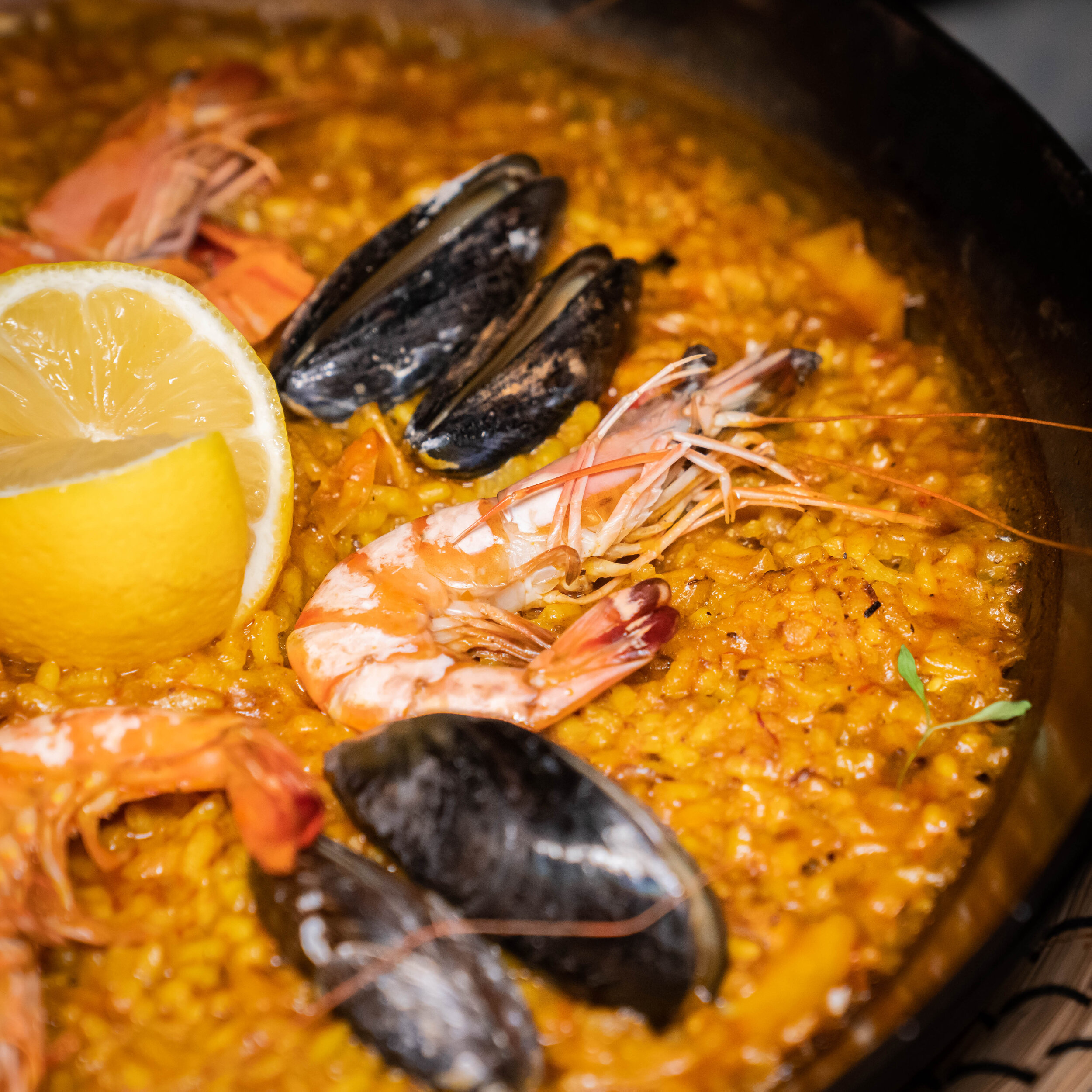Omar's Simple Spanish Paella
Try our simple paella to celebrate National Paella Day (27.3.20) - scaled down and adapted so you can create straight from your storecupboard.
Serves 6
Ingredients
globe artichokes 2-3 (depending on the size), cleaned and trimmed (use tin ones or avoid all together if hard to find)
saffron 1g (a pinch of colourant will be a good replacement if you cannot find)
salt 1 tbsp
Spanish olive oil 8 tbsp
chicken pieces (on the bone) 400g
rabbit pieces (on the bone) 400g (or you can replace with any pork cut, such as ribs or loin)
runner beans 200g, trimmed and cut into 2½cm pieces (frozen would work just as well)
broad beans or fresh white butter beans 100g (frozen or tinned could also be used)
garlic cloves 4, finely chopped
tomatoes 1 large or 2 small, grated
sweet pimentón/paprika ½ tsp
water or light chicken stock 2 litres
Spanish rice 500g, such as calasparra or bomba (you can replace by Italian arborio rice for risotto)
rosemary 1 sprig
Method
First prepare the artichokes. Trim the stalks and peel away the outer leaves so you are just left with the artichoke hearts. Scrape away any furry choke with a teaspoon, then run a lemon half over the hearts so they don’t discolour.
Wrap the saffron in foil and toast it for 30 seconds on each side in a paella pan over a medium heat. Remove from the pan and set aside.
Increase the heat to the maximum and season around the edges of the pan with the table salt. Wait until the pan is really hot and then drizzle with the olive oil. It should start smoking immediately; at this point throw in the pieces of chicken and rabbit (the meat needs to absorb the salt at this early stage). Fry the meat until nicely browned on all sides (this will add to the flavour of the paella).
Add the runner beans and broad beans and stir together for 1 minute before adding the garlic. Cook for 1 minute and then add the grated tomatoes (discarding the skin), pimentón and toasted saffron. Cook for 4 minutes, stirring all the time, until you can see that the tomatoes have lost most of the juice and changed colour.
Add the water or chicken stock and leave to simmer for about 20 minutes, allowing the bits of caramelised chicken and vegetable on the bottom of the pan to dissolve so you get a rich stock. If you use chicken stock instead of water you will only need to simmer for 5 minutes. Check the seasoning but bear in mind that the rice will absorb a lot of saltiness, so it’s okay if it tastes quite salty at this stage.
Cut the artichokes into quarters and add to the pan – if you add them any earlier the entire paella will turn dark in colour. Add the rice, spreading it evenly over the paella pan and stir just once. Cook on the highest heat for about 10-12 minutes before reducing the heat right down and cooking for a further 5-7 minutes. Once you have added the rice and given it a good stir you shouldn’t touch the pan with a spoon again. You need to keep the film that develops on the top of the stock from breaking, otherwise the steam will escape and the rice won’t cook evenly.
When the water is at a lower level than the rice itself, add the rosemary sprig. If the layer of rice on the top starts to look a bit crispy, cover the paella pan with a layer of newspaper for the last 5 minutes of cooking. This will help to steam the grains on top while the bottom gets crispy. In Spain this crispy bottom layer, the ‘socarrat’, is the most valuable part of the paella. Once the paella is finished it should look like a completely flat layer of rice. Leave to rest for 5 minutes before serving.

